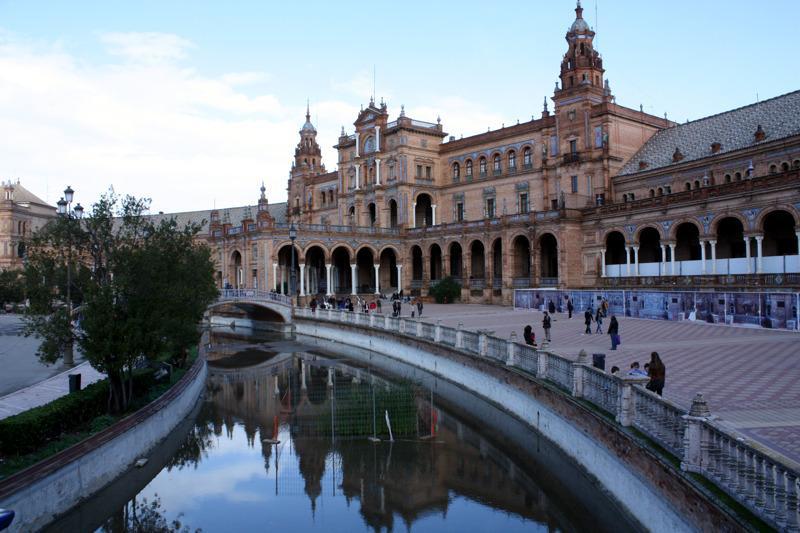Sevilha, Andaluzia, Spain
Suggest Place to Visit
1584
Track to location with GPS |
 |
Seville, on the banks of the Guadalquivir stands this beautiful city, whose origins plunge it into the unknown. Perhaps three thousand years ago they would place us at the birth of this old city.
From Tartessos to the present day, Seville has been Roman, Visigoth, Muslim and Christian, as well as an important point of confluence of maritime and land routes.
Called Hispalis by the Romans and Isbiliya by the Muslims, it presents beautiful testimonies from both cultures.
With the discovery of the New World, Seville became the port of departure and arrival for ships that ventured to explore and colonize these new lands, thereby achieving an important commercial economy.
At present it is a beautiful city in the south of the Iberian Peninsula, distinguished by its privileged climate, the welcoming character of its people, its renowned Easter and Fair, and for being the sanctuary of bullfighting.
Tartessos origins:
Confusing Mythology and History, the origin of Seville dates back to the Tartesso people whose name comes from the one who then received the Guadalquivir river (Tarssis).
This thesis is supported by archaeological finds dating back to the 8th century BC. An example of these findings is the fabulous treasure called ´´El Carambolo´´ that contains pieces of solid gold, this element could be part of a cuirass.
Even in the Bible, mention is made of this enclave, when King Solomon sent his ships in search of the gold of Tarssis for the construction of his temple.
For all this, it is thought that its splendor was known throughout the Mediterranean, since even Greek and Phoenician ships would also come in search of its metals.
Nothing is known about the cause of the disappearance of this People, after which different cultures arrived: Turdetan, Iberian and Punic.
Roman age:
Another splendid stage was the Roman one. After defeating the Carthaginians who dominated the city (206 BC), with Scipio the African, Rome arrived in Seville, turning it into a great city.
At this time the city took the name of Hispalis. This city was used mainly by the Romans as a commercial capital. A residential colony was built on the outskirts for the Roman aristocracy called Itálica, where two important Roman emperors were born: Trajan and Hadrian.
According to Mythology, it was Hercules who marked the location of the city for Julius Caesar, being refounded by the latter in 45 BC.
Visigothic period:
It was the year 426 when Seville was taken by Gunderico, a Vandal leader. Several invasions took place at this time that ended with the arrival of the Visigoths. Leovigildo and later his son Recaredo would reign as great Visigoth kings.
During this dark period, Seville stands out as a cultural center thanks to the figure of Saint Isidore born in this city in 560. He wrote ´´The Etymologies´´, an encyclopedia of knowledge of the time. San Isidoro is one of the figures that appear on the city's coat of arms.
Muslim era:
In the year 712 of our era, Muza conquered Seville, thus beginning the Muslim era that would extend over five centuries. The Muslims called this city Isbiliya, hence its current name.
Although depending on the Caliphate of Córdoba, Seville became the most important city of Al-Andalus at this time. It was once again the focus of cultural wealth and capital of the Taifa kingdoms by the hand of King Almutamid the poet.
Later the Almoravids and Almohads would arrive, new lords of Al-Andalus who give the city the basic appearance of the historic center that it still preserves. The construction of the Giralda, Torre del Oro and Alcázar, emblematic monuments of the city, date from this period.
Christian Era:
In 1248, after two years of siege, King Fernando III succeeded in surrendering the Muslims of the city of Seville.
In a short time the Muslim population is expelled and the site is distributed among the conquerors. It is given a new urban demarcation in different districts, always around their respective parishes (many of them converted mosques). The main mosque would be demolished to build the cathedral.
King Fernando III the saint settled in the city until his death. He is succeeded by his son Alfonso X the wise, who composes a large part of his chronicles from the Alcázares and to whom the motto of the city is owed NO e DO.
During the time after the conquest of the city there was a large settlement of Jewish population, although they were not well treated (they ended up expelled or converted to Christianity). The Santa Cruz neighborhood was the great Jewish enclave.
In these times other kings (such as Pedro I) chose Seville as their habitual residence. The end of the reconquest was also planned from Seville.
Modern age:
After the discovery of America, Columbus arrives at the docks of Seville, where he announces his great feat. In these docks the different fleets will be organized that will continue with the exploration of the new lands.
In the 16th century, Seville was the main trading port with England, Italy and Flanders. The monopoly of the link with America was constituted and the Casa de Contratación (Archivo de Indias) was founded. For all this, Seville had an important economic and demographic growth that made it the largest city in Spain.
In Seville people of all social classes and nationalities congregated, highlighting the importance of merchants.
Seville was also the setting for the wedding of Carlos V.
During this stage, many palace houses were built, the Hospital de las Cinco Llagas (current seat of the Parliament of Andalusia) and the construction of the Cathedral was completed. Great art figures passed through the city, such as Cervantes, Garcilaso, Lope de Vega ... and it was also the birthplace of important artists such as Murillo, Velázquez and Zurbarán.
17th century The Decline:
All the opulence that the discovery of America brought came to an end with the economic crisis that affected all of Europe and the transfer of the Casa de Contratación to Cádiz, which led to the diversion of trade to this city.
This era distinguishes Seville as a ´´convent city´´ with a total of 73 monasteries of different orders, both male and female. It is in this century when the official career of the brotherhoods of passion is instituted with which Holy Week is born.
Later, in the 18th century, the tobacco factory (current University headquarters) and the Real Maestranza Bullring were built.
In the 19th century the railway arrived in Seville.
Twentieth century:
Ate
Industry
Military plane manufactured in the factories of Construcciones Aeronáuticas S.A. (CASA), of the EADS group.
In economic terms, Seville is an important commercial, services and financial center, and together with the Metropolitan Area an industrial area, where the development of new companies that are located in the different industrial parks that exist or are being created is being promoted.
The Cartuja 93 technology park [105] located on the land where the Expo-92 pavilions were installed, already employs more than 11,000 people and produces R + D + i worth more than 10% of the province's GDP , hosting more than 300 companies and entities (70% of which are advanced technologies).
At the level of private companies, the most important engineering company in Andalusia, Abengoa, [106] inaugurated on September 23, 2009, [107] in the Palmas Altas area and at the foot of the SE-30, the Palmas Altas Technological Center , which is the largest private business technology complex in southern Spain. [108] Seville is gradually becoming the third European center for the aeronautical industry, together with Hamburg and Toulouse with factories of the multinational aeronautical company EADS established next to the Seville-San Pablo Airport and in Tablada, as well as the Aerospace Technology Park of Andalucía Aerópolis, [109] located in the municipality of La Rinconada, next to the A4 highway and the Seville-San Pablo airport, where more than thirty auxiliary companies in the aeronautical sector are located.
Currently (2008) the implementation of the third technological park of the city is being developed in the area called Villanueva del Pítamo, together with the UPO (Pablo de Olavide University), Alcalá de Guadaira and the city of Seville itself and the fourth Park Technological in Dos Hermanas, in the Arco Norte area promoted by the Dos Hermanas city council, the Pablo Olavide University, the Seville city council and the Junta de Andalucía.
The automotive component manufacturing industry is represented by the factory that FASA-Renault has in the San Jerónimo neighborhood, where one of the largest and most modern gearbox factory in Europe is located.
The largest Spanish brewing group also has an important production factory and, among the three largest in Europe, Heineken, parent company and owner of the Cruzcampo brand. Also noteworthy is the production of metallurgical products through the Siderúrgica Sevillana factory located in Alcalá de Guadaira, and the factories of the Ros Casares group in the port.
After a long period of crisis, the shipyards have been resized and a private company (Astihuelva, S.A) has assumed its management and the construction of ships adapted to the technical possibilities of the facilities has started again.
The current configuration of the passage of the Guadalquivir river through Seville had a great transformation with the infrastructure that was developed on the occasion of the Universal Exhibition of 1992; These works involved the construction of several bridges that significantly decongest freight traffic in trucks through the city, with the construction of the Alamillo and V Centenario bridges. Likewise, Torneo Street was recovered for the city by eliminating the railway infrastructure that existed in the area.
The industrial activity related to the Guadalquivir river is constituted by the shipyards, where ships are built according to the navigability limitations of the river, and which employ a good number of auxiliary companies.
Town planning
The urban development of the city has been very intense throughout the 20th century due to the continuous increase in population, which went from 147,271 inhabitants in 1900 to 700,520 in 2000. This increase came from natural growth and immigration coming mainly from other towns in the province of Seville and the neighboring provinces. But if the center of Seville constitutes an urban mosaic where the historical heritage is surrounded by a network of narrow streets that are largely pedestrianized, the city, from the 19th century and especially from the 20th century, began to overflow the perimeter of the wall. . Progressively neighborhoods are established that would be increasingly numerous and remote. The neighborhoods of Seville are characterized by being very different from each other in terms of population and facilities. [98]
By means of a Resolution of the Ministry of Public Works and Transport of the Junta de Andalucía on July 19, 2006, the New General Plan for Urban Planning of Seville (PGOU) was approved. The PGOU is the general urban planning instrument of the municipality adapted to the Urban Planning Law of Andalusia. Through the PGOU we proceed to establish the urban planning of the entire municipal term and the organization of the management of its execution according to the characteristics of the municipality and the current and foreseeable processes of land use. The General Urban Planning Plan has a double function: to be the instrument for the comprehensive planning of the municipality's territory; and be the instrument that specifies the urban regime applicable to each land and establish the rights and duties of the owner thereof. [99]
Parks and gardens
Parks and gardens
Monument to Christopher Columbus in the Murillo Gardens.
Main category: Parks of Seville
Among the parks and gardens of Seville, the following stand out: Gardens of the Reales Alcázares, María Luisa Park, Alamillo Park, and Princes Park. Other important parks in Seville are the Miraflores Park, [100] the Amate Park, [101] the Catalina de Ribera Gardens, [102] the Buhaira Gardens, the Delights Gardens, the Murillo Gardens, the San Diego, the Prado de San Sebastián Gardens, the San Jerónimo Park, the Infanta Elena Park and the José Celestino Mutis Park, among others. [103]
Maria Luisa Park
Main article: María Luisa Park
Glorieta by Gustavo Adolfo Bécquer in María Luisa Park.
María Luisa Park is the most famous park that exists in Seville, because it is part of the tourist route of travelers who visit Seville due to its location in the Monumental Zone of the city.
This park was originally part of the gardens of the Palace of San Telmo, and they were donated to the city in 1893 by the Infanta María Luisa Fernanda de Orleans (Duchess of Montpensier). It was renovated by the French engineer Jean-Claude Nicolas Forestier, curator of the Boulogne forest in Paris, which gave it a romantic touch. In the park the squares of Spain and America were opened, which constitute one of its main attractions. It was inaugurated on April 18, 1914.
Cultural events
Flamenco Biennial
The guitarist from Algeciras Paco de Lucía, a regular at the Biennial.
The Flamenco Biennial is a festival that is held in Seville every two years and is set at the various theaters in the city. The most representative artists of cante jondo participate in the festival and the new promises of the genre are given the opportunity to join the musical scene. The first Biennial was held in 1980, and the XV Biennial was held in September 2008. The Biennial consists of a series of shows that, from the first moment, tried to link the Biennial with the world of Fine Arts, theater, cinema, music, and poetry. In the first editions there was a trophy called Giraldillo, which was later suppressed. [140]
Seville European Film Festival
The Seville European Film Festival was initially born in 2001 as the Seville Sports and Film Festival and is currently (2008) organized by the City Council of this Andalusian city. The basic objective is the dissemination of European film culture, with special attention to emerging productions, giving way to the incorporation of new film expression media. At the same time, it encourages the meeting of the works of new creators and established figures that allow us to show a broad perspective of the most recent and significant international productions. The Festival also offers an annual meeting place for the European film industry. In addition to the two competitive sections, one for feature films and the other for documentaries, specific cycles are scheduled for specific authors, advertising films, seminars, concerts, and other cultural activities. [141] The Juries of the competitive sections are made up of personalities of special relevance in the world of cinema and culture. The decisions of the juries of the competitive sections are final.
book Fair
The Book Fair held in the city during the spring months is one of the most significant cultural events that take place in the city. Since 2002, the Seville Book Fair Association (AFLS) has been in charge of organizing the Fair.
Currently (2008) the Book Fair Association is made up of a total of 22 public and private institutions, among which the Association Gremio de Librerías de Sevilla, the Collegiate Association of Writers, the Fundación Centro de Estudios Andaluces and the José Manuel Lara Foundation stand out. Each contest that is held has the presence of prominent writers who present their latest books at the Fair.
The main sponsors of the Book Fair are the Seville City Council and the Andalusian Government through the Ministry of Culture and Education, apart from another important number of public and private institutions such as Cajasol, Canal Sur Radio, Provincial Council of Seville, etc. [142]
Popular festivals
There are two emblematic festivals in Seville of international prestige that are celebrated during the spring, which are Holy Week and the April Fair. It is also very popular among the Sevillian citizens to attend the Romería del Rocío that every year is celebrated in the Sanctuary of the Virgen del Rocío located in the town of Almonte, in the province of Huelva, as well as one of the great days for the Sevillians , it is the day of Corpus Christi.
Holy Week
Main article: Holy Week in Seville
The Great Power of Seville, one of the most revered images of Holy Week in Seville.
The celebration of the different acts that take place during Holy Week become one of the most important cultural, religious and artistic events that take place in the city. The celebrations of Holy Week in this city are among the most famous in Spain and have an international resonance in the Catholic world, which is why they are an important focus of tourist attraction. Holy Week is considered a National and International Festival of Tourist Interest.
The processional parades of Holy Week are the evolution over centuries of the forms, modes and manners of the brotherhoods and brotherhoods composed of various groups of people of different occupational backgrounds or other characteristics where multiple religious, artistic, social and historical factors have influenced . The Penance Station or processional exit is the main external cult of the corporations that carry out the Brotherhoods. The week runs from Palm Sunday to Resurrection Sunday, with images representing the Passion of Christ in procession each day, totaling about 60 brotherhoods.
There is a General Council of Brotherhoods and Brotherhoods, whose members are elected every four years by the Elder Brothers of the different Brotherhoods, which is in charge of organizing Holy Week and streamlining procedures and agreements with official institutions and everything related to it. to the Official Career. [143]
There is a whole series of elements related to Holy Week in Seville, such as the Pasos, the brotherhoods and brotherhoods, the Nazarenes, the costaleros and the saetas.
Atmosphere of a street of the ´´Real de la Feria de Abril´´.
April Fair
It is known as the April Fair to one of the popular festivals that take place in the spring, specifically in the month of April. The Fair takes place in the Los Remedios neighborhood and is considered a National Festival of Tourist Interest, and since 1965, as International. [144]
The Real de la Feria, [145] made up of 24 blocks, has an approximate surface area of 450,000 m2. in which 1,047 booths are located, with varying dimensions from one to the other with a road network of the Real made up of fifteen streets with names of bullfighters who have been intimately attached to the city. This part of the enclosure is equipped with sufficient infrastructure to solve the problems of connection of water, sewerage and electricity demanded by each one of the implemented booths.
Together with the Real de la Feria, there are the facilities of an Amusement Park, with some 400 different attractions, this Park is ephemeral and is known as Calle del Infierno. [146] The Municipal Booth is where the City's Protocol activities are carried out and each of the Districts has a booth for public use, because access to the booths in most of them is limited to their members. [ 147]
The origins of the April Fair date back to 1846 when Narciso Bonaplata, of Catalan origin, and José María de Ybarra, of Basque origin, wrote a proposal that they took to the Municipal Council of Seville. In March 1847, Queen Elizabeth II granted Seville the privilege of a fair. Some items ca
Comments
We don´t have yet any comments about:
Sevilla
Sevilla
Be the first to leave a comment as it is very important to inform other people
Outros locais a visitar
Within a radius of 20 km from:Sevilla
Archivo de Indias |
| 0,4 Km |
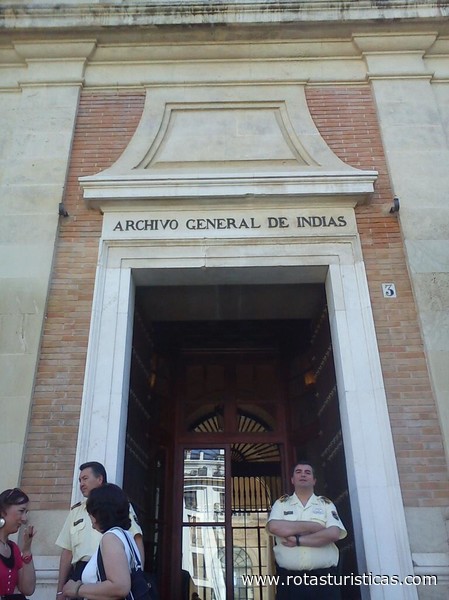 |
Museo Del Baile Flamenco |
| 0,8 Km |
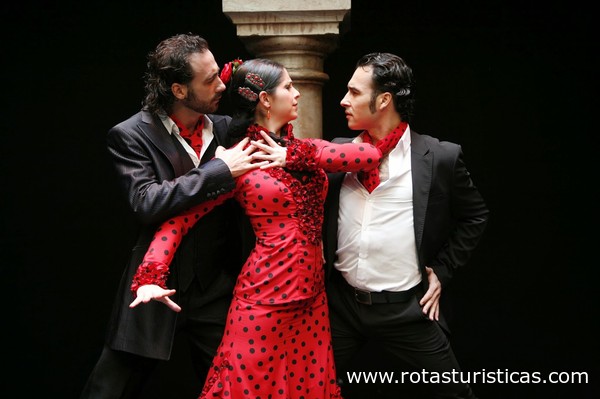 |
Casa de Pilatos |
| 1,1 Km |
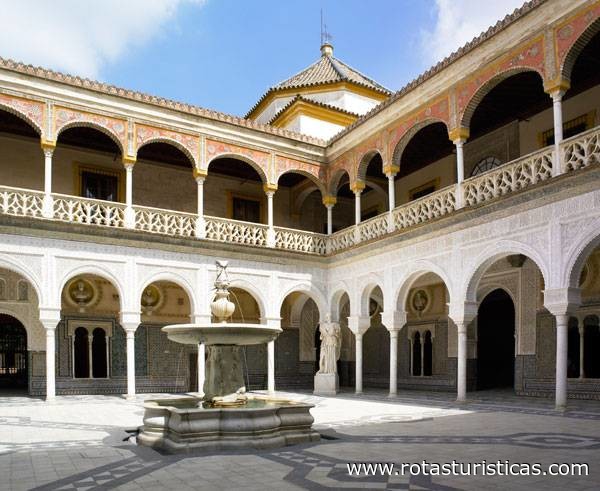 |
Seville Museum of Fine Arts |
| 1,1 Km |
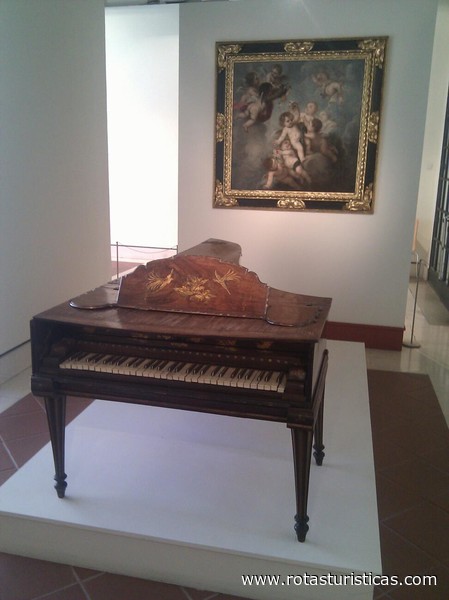 |
Museo de Artes y Costumbres Populares |
| 1,4 Km |
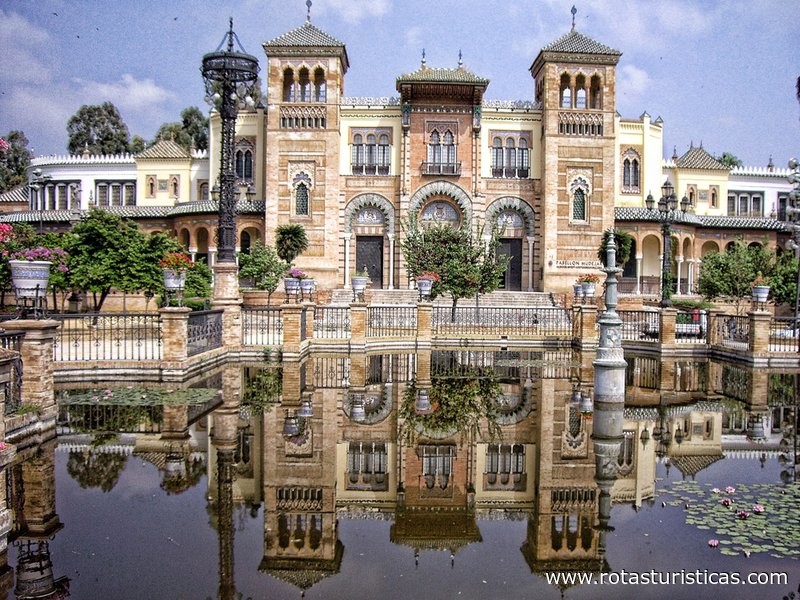 |
Hotel reservation near Sevilla within a radius of 20 km
Why to book with RUTAS TURISTICAS
The best prices
Our partnerships with the world´s largest operators offer research on the best market prices.
More options
At Rotas Turisticos you can book the hotel, buy the air ticket, book the transfer from the airport to the hotel and vice versa, book the local excursions, rent the car, take travel insurance and consult the places to visit and where to go.
Holiday Tips & Destinations
Hundreds of holiday destinations with all the options that allow you to easily choose the destination that best suits your dream vacation.
RUTAS TURISTICAS
Links


